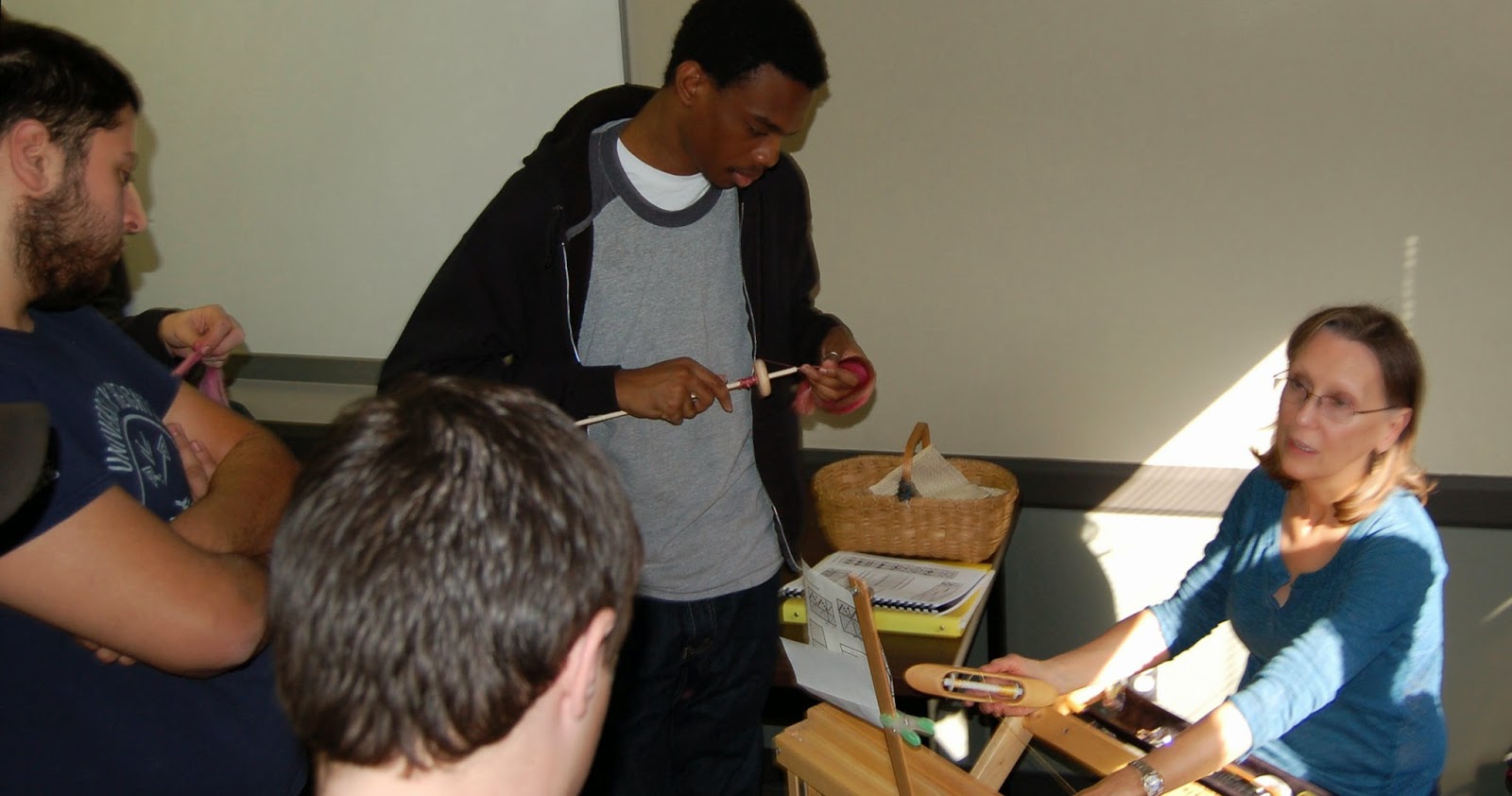These days, natural materials are almost as popular with materials engineers as they are with handspinners, and woven fabric is an essential construction component in materials engineering labs. Dr. Uday came up with the idea that his students would benefit from knowing how yarn and cloth are made. So, yesterday, Karen Ford, Jennifer Justiss, Mary Kaiser, Deb Kattus, Jennifer Lacky, and I (Mary Spanos) taught 100 engineering students to make a spindle and spin yarn.
 |
| Jennifer Justiss teaching students to spin (photo by Karen Ford) |
This took place in two sections of a class for students who transferred into the UAB program. There were students from many engineering sub-fields: materials, mechanical, electrical, bio-medical, and computer.
 |
| Mary Kaiser shows students how to spin (photo by Mary Spanos). |
They were smart people so they caught on quickly. After they assembled their high whorl, toy-wheel spindles and learned to spin some of the soy fiber that Dr. Vaidya is currently working with in the materials lab, they spent time talking with Terry Martin about how the yarn they were spinning could be turned into cloth.
 |
| Terry Martin at her Baby Wolf loom. It isn't visible in the picture, but Terry was weaving a complicated bound-weave structure (photo by Mary Spanos). |
It was quite an unusual demonstration experience. Combining one of the oldest technologies, spinning yarn, with one of the newest, materials engineering. Hopefully, there will be many more opportunities for us to be involved with this interesting group.

No comments:
Post a Comment